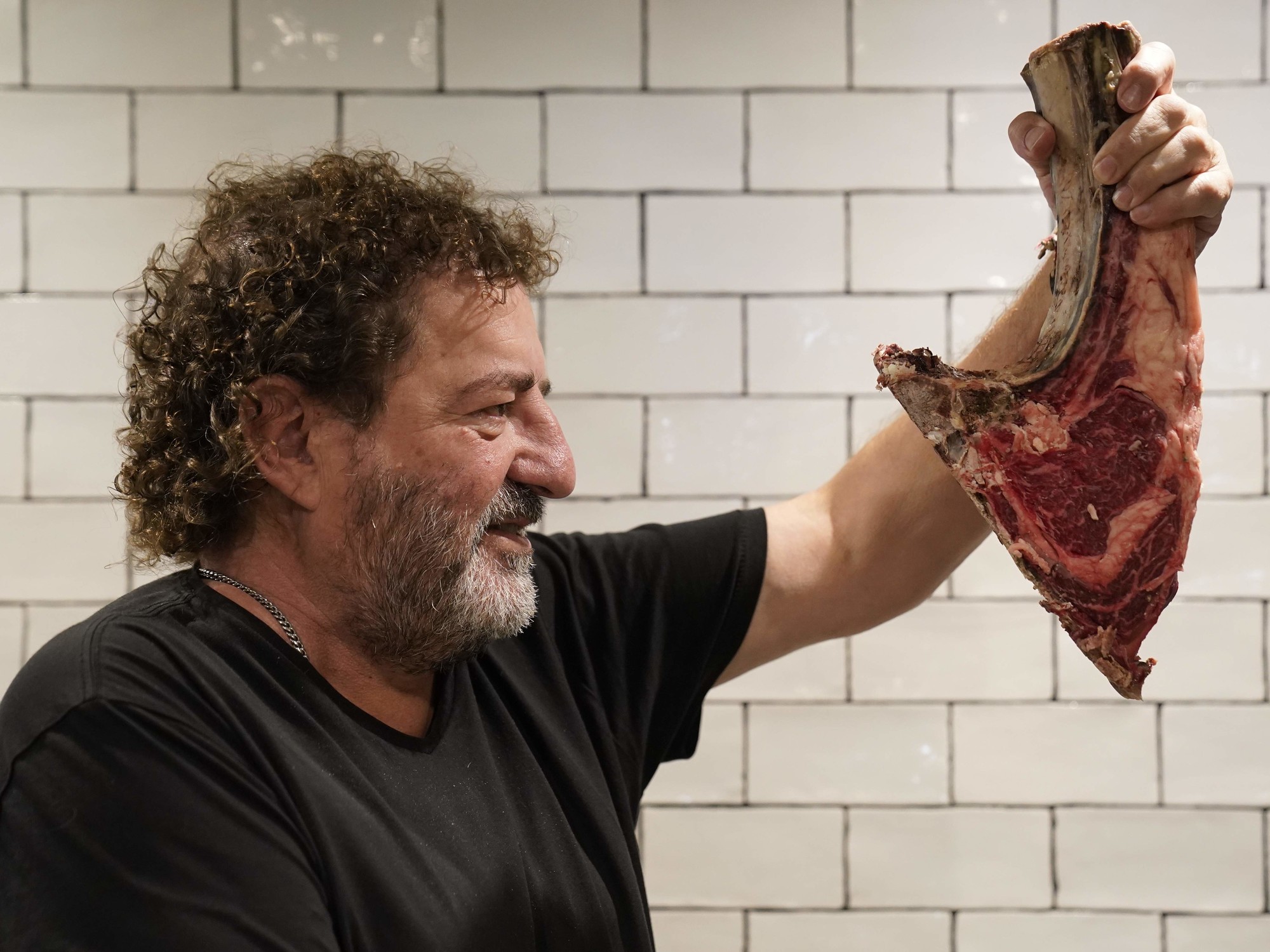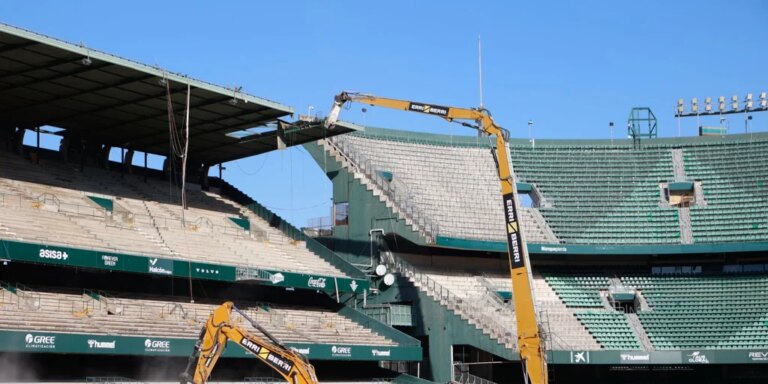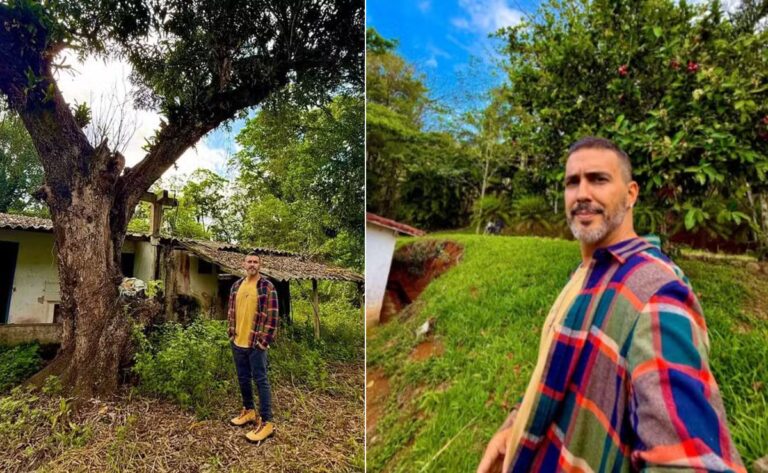
What are the assumptions in the land of cows and bulls? Iñaki López de Viñaspre (62) It may sound like heresy. This anthropologist and chef (he prefers this definition to chef) old cowit is gradually being positioned in Buenos Aires restaurants not as a disposable product, but quite the opposite, as a very high-quality product.
Iñaki’s documents say he was born in the Basque Country, but he defines himself as “half Basque and half Argentine.” Since launching his first gastronomic project in Argentina with his brother Mikkel 20 years ago, he has been traveling constantly, spending about five months a year in Buenos Aires.
Three weeks later, on December 3, the Spanish Embassy Re-verifying the quality seal of restaurants from Spain He gave it last year to his restaurant, Sagardi, in San Telmo, where he began “teaching” the old cow, Tusleton, the symbol of Basque cuisine. Another space “Berria” opened this year. Meat plays a big role there, including a large refrigerator where you can watch the meat age. As López de Viñaspre understands, the time is right.
This recognition from the Spanish government has already been awarded to 500 restaurants around the world and highlights those that promote authentic, high-quality Spanish cuisine. And part of that reliability is, of course, txuleton.
This gigantic chop, which can weigh nearly a kilogram, is a tradition that began in the Basque Country at least in the 18th century. Roast an old and fat cow. López de Viñaspre wanted to take her to Argentina, but admits that the path was initially very difficult.
“Today, as we enter 2025, the world of gastronomy recognizes that at a global level, older animals that are well-nourished and have developed all their physical abilities. It is a much better gourmet ingredient than veal or steer.. It’s a universal parameter. But 20 years ago, when I started entering the Buenos Aires meat market looking for animals that were 8 or 10 years old, I went to look in the refrigerators and butchers, and they said to me, “This is it.” scrapNo one is working on it, it’s a disaster,” he recalled.
Little by little, he started working in line with his philosophy and was able to source primarily from small family farms, where the cows spend up to eight years on pasture.
“It produces meat that looks like this: High level of natural fat content penetratedthat yellowish-orange layer is mostly vegetable fat because it’s all grass, grass eaten by animals. Sensually, it has a deep flavor that lingers in your mouth for a long time, something different,” says Lao Niu. It matures in just 6-8 weeks. Rigor mortis is thought to affect the product and is therefore not consistent with the longest period of aging.
now, Have we Argentines been living the wrong way? Why are bulls and beef always synonymous with quality in our gastronomic culture?
The cook then brings out another metier. anthropologyHe earned a fair income working in the kitchen while studying his career in Barcelona. He says anthropology has helped him understand why we eat the things we eat. And he explains that culturally rooted problems are actually caused by Bill Clinton’s famous phrase, “It’s the economy, you idiot.”
 Iñaki emphasized that his restaurant doesn’t ask customers where they want their meat. Photo: Fernando de la Olden
Iñaki emphasized that his restaurant doesn’t ask customers where they want their meat. Photo: Fernando de la Olden“Rather than producers seeking to produce premium meat with added gastronomic value, he prefers to sell it at today’s value. During and after the war, Argentina was dedicated to selling meat to the world in large quantities and very cheaply, creating a culture in the countryside where producers determined that the softer the steer, the better. And it permeated the family culture” he analyzes.
Similarly, he entered the next culture. Eat meat well grilled. In his restaurant, Iñaki says, “Meat has no meaning, and we don’t ask what it means. We are chefs, and in our experience and knowledge, we serve the meat in the way that we think will make it taste best for our customers.The important thing is: 3 colors: Toast on the outside, orange and red in the middle, and all the juice concentrated inside. You can taste everything there. ”
He admits that these positions are controversial, for example after he gave a lecture on his meat vision not long ago at the University of Buenos Aires, or last year at the Meat & Fire festival in Barcelona, which had a huge impact on social networks.
“We need to understand why things have been the way they have been,” the anthropologist says again. “Traditionally, meat was eaten well-cooked here. There were logistical reasons for that method. Until recently, refrigeration didn’t exist, and it was killed in the field and eaten within a day or two. It was a young animal, but it had rigor mortis. The only way to break down the fibers is to roast it very slowly and bake it at a low temperature for a long time. Breaks down the fibers of animals and makes them edible”.
That was the starting point. After that, he continues, it was permanent. The myth that raw food can transmit bacteria And that’s why we need to eat everything well-cooked, Iñaki says, and it’s “deep in our subconscious.” I’ve even seen menus in restaurants in Buenos Aires (I won’t say which ones) recommending pregnant women, the elderly, the disabled, and children to order “cooked” meat.
“You are giving the impression to your client that there is a risk. Children must be taught to eat well! Obviously Argentina today has a level of food safety and logistics chain. Guarantees meat safety” he says.
He believes Argentine chefs and diners themselves who have traveled more and are more knowledgeable have contributed to the evolution. Because the picture of Argentina’s gastronomy he sees today is very different than it was 20 years ago when he arrived. But returning to the question of economics, he acknowledged that it is much more profitable for producers to feed animals in feedlots and send them to slaughter than to raise livestock. Invest years in your care That comes with “very significant financial risks”, compounded by the risks of an ever-volatile economy like ours. “You’re either going to be rich in eight years, or you’re going to go broke,” he says.
But he says he’s breaking up with this. “model” merchandise of meat” This is even less justified. “In a country with as much grassland as Argentina, all the meat could eat grass and grow fat quietly. It’s not like we live in Luxembourg and there’s no pasture…but the industry has decided not to do that.”
The same thing happens and you get elated. fishing. And that’s the next goal. Just like with meat, it’s about recovering high-quality products. Our abundant fish is not only packaged and frozen on factory ships on the high seas, but also arrives fresh to our restaurants.
“I don’t think we can do that.” Despite being the world’s largest fishing bank, Argentine fish do not even enter the country.And the logistics system is not prepared for that product to arrive in Buenos Aires in this situation — he is angry —. A small portion enters the Argentine port, but the transformer does the same and then 99.9% of fish on the market is frozen.”.
The challenge they now face, in addition to continuing the freezing program, is to work with young producers who are enthusiastic about the idea and can maintain the logistics of two or three shipments a week. For people who value fresh fish and pay for it. “It’s complicated because there are some things that are easy and some things that are different. You put everything in the factory and it just goes away,” he says, comparing it to the same thing that happens to producers with the calf-old cow dichotomy.
Through collaboration with producers, the restaurant is now able to harvest seafood such as flounder, anchovies, bonito, and bonito. Cococha of hakethe most popular fish chin, is actually a luxury item. “You have to convince the hake fishing boat to remove the only cococha you have and pay for it,” he says.
All of this, Iñaki emphasizes, starts with haute cuisine and has a trickle-down effect from restaurants to homes to markets (Iñaki says there are now butcher shops in Buenos Aires selling high-quality old beef). Gastronomy in general (including winemakers) plays an important role in this regard. become a teacher.
“We chefs are very humble people and have to respect the producer, the product and the end customer. And we have a social obligation. Our role is not only to cook, build a business and make a profit, but we also have to educate. Teaching people to eat better, healthier and more happily” he concluded.



